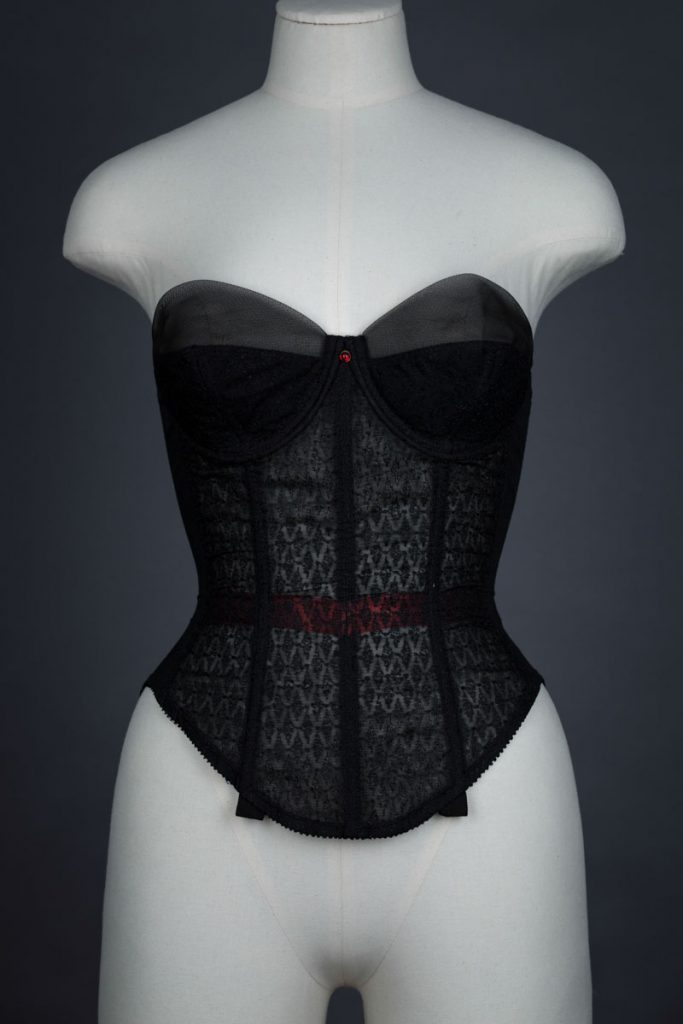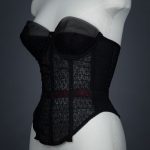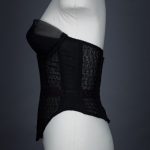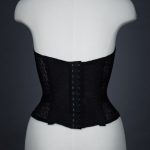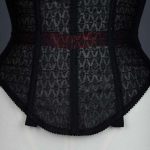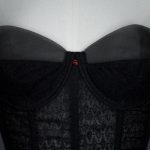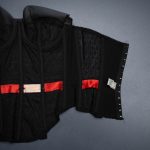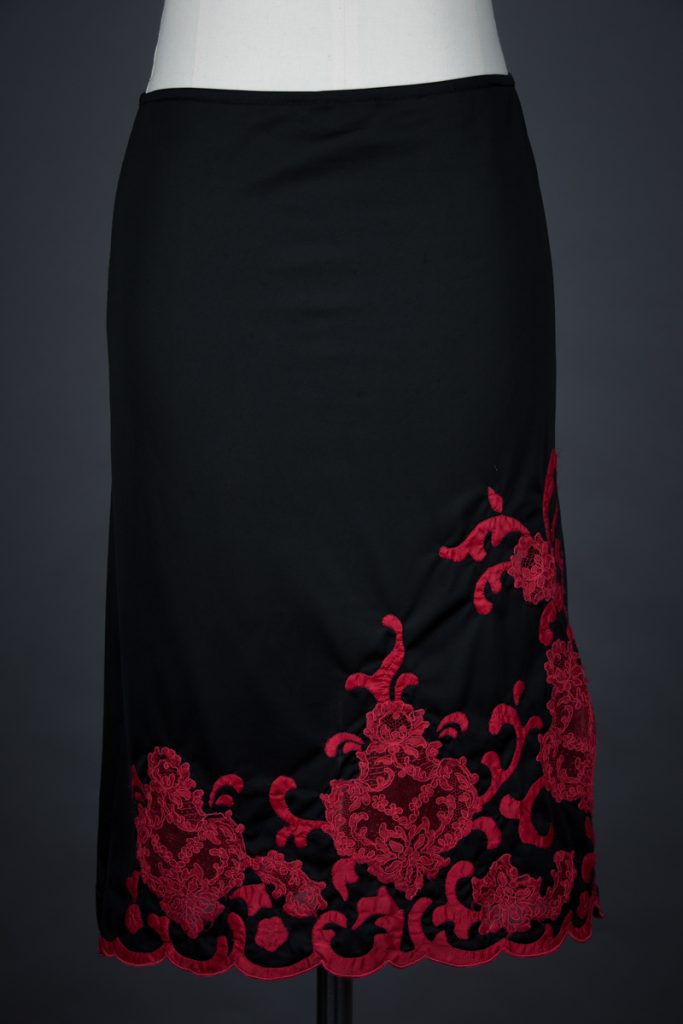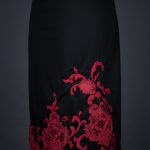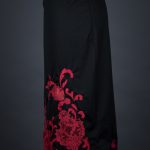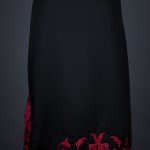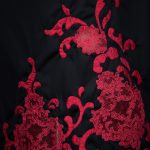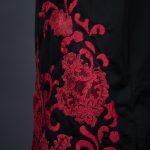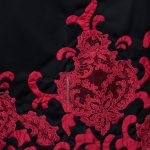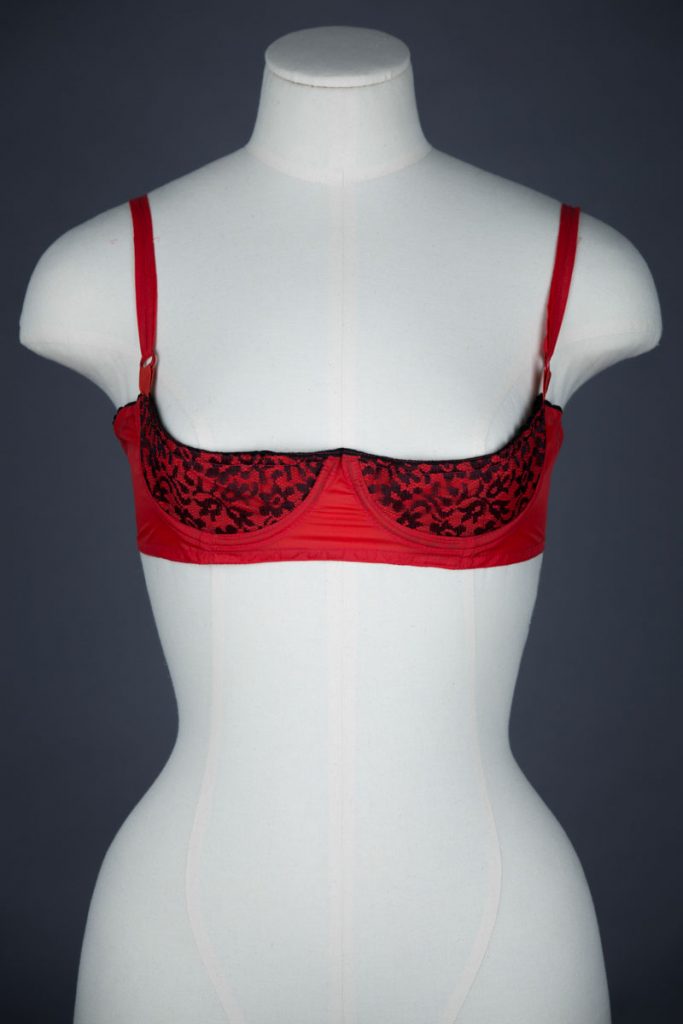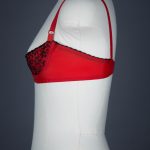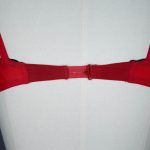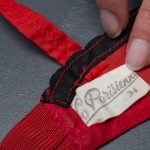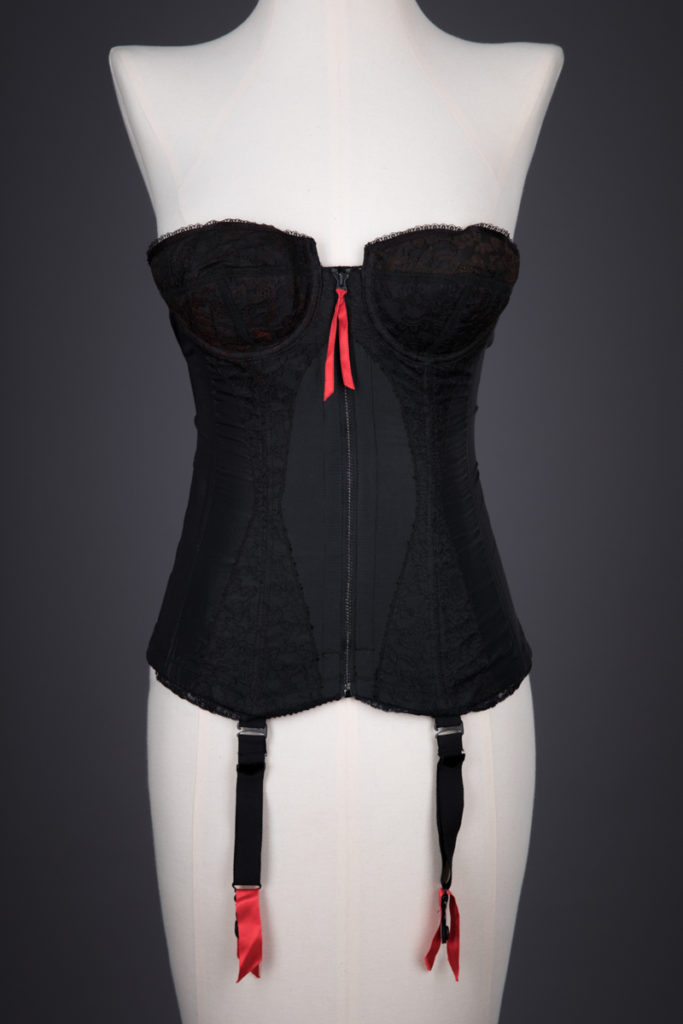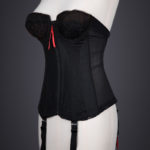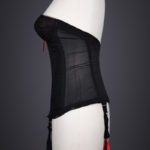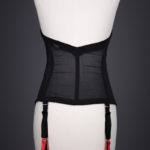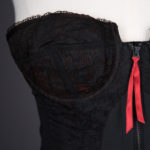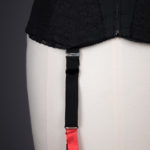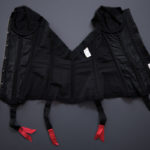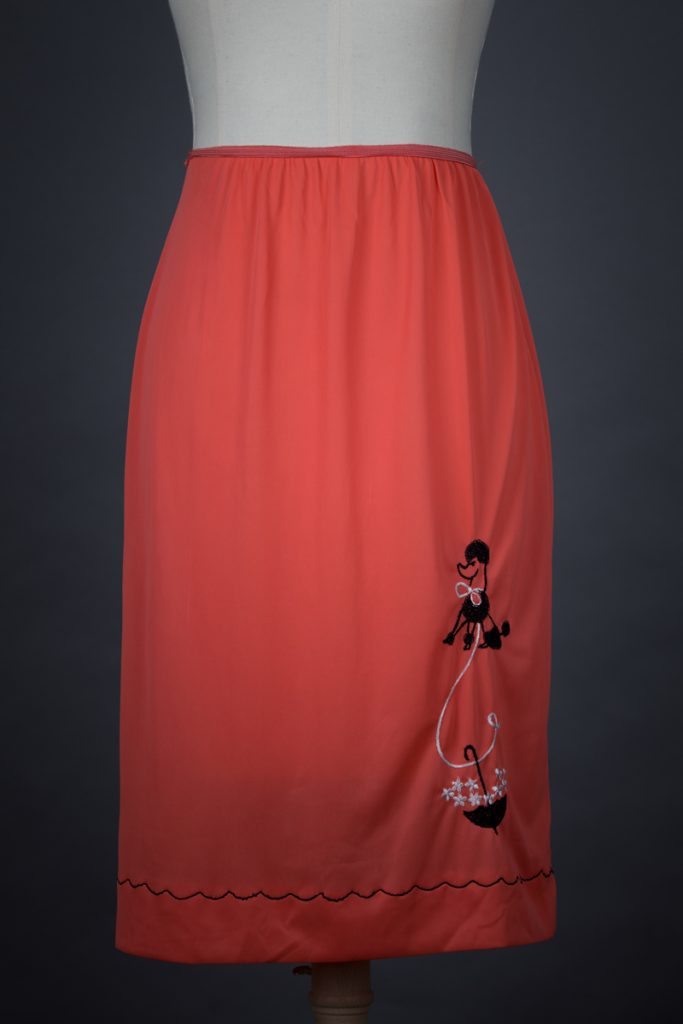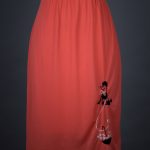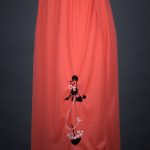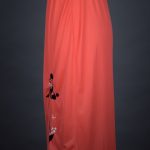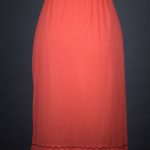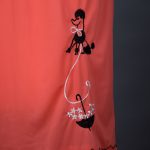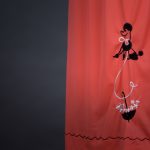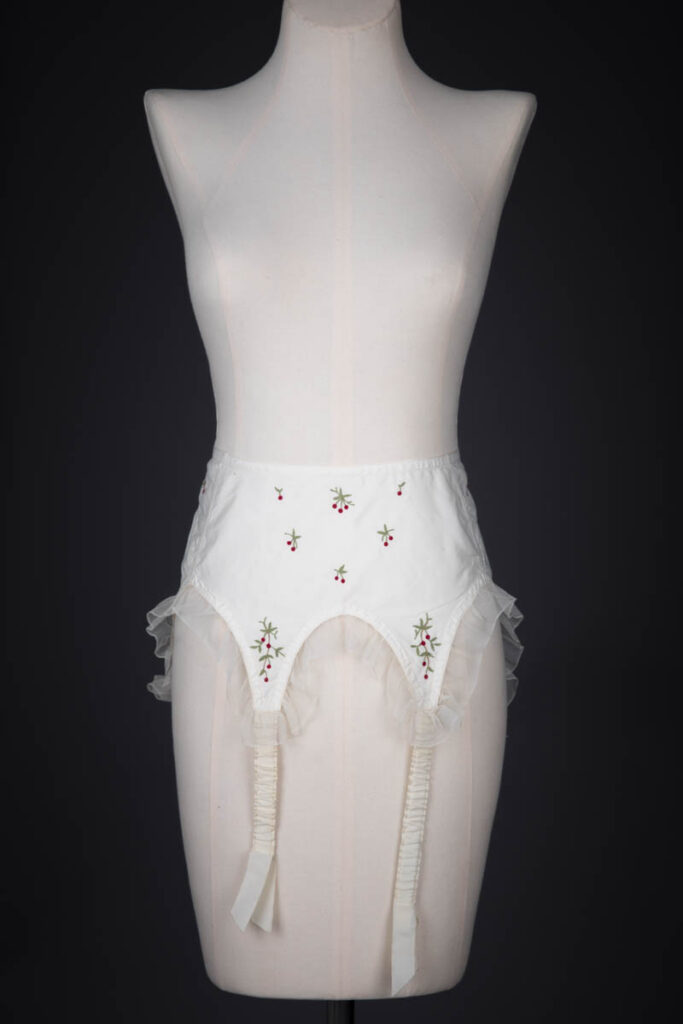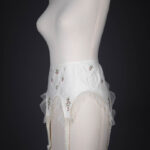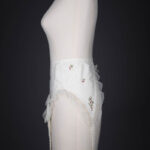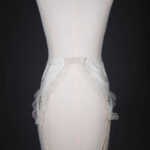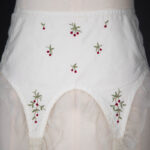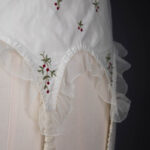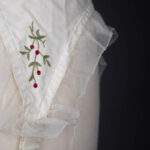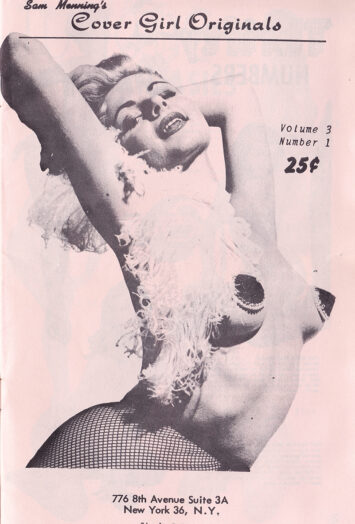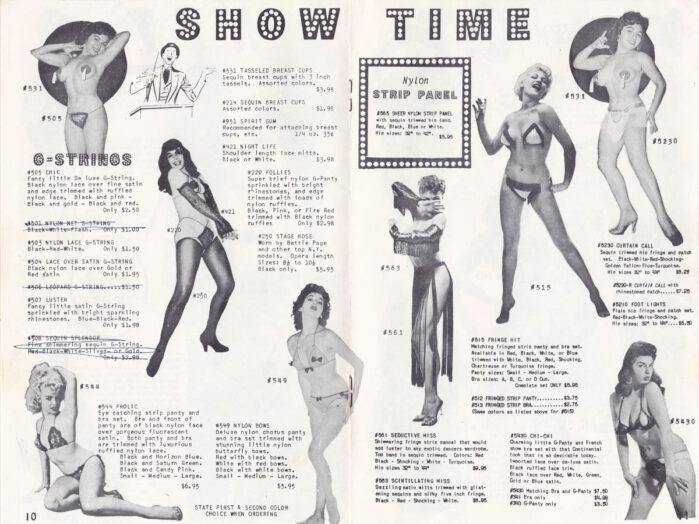While the early years of the Second World War brought about austere utility in women’s fashion, its end inspired the small-waisted, full-skirted “New Look” credited to French couturier Christian Dior. Foundation garments were crucial to achieve the silhouette’s prominent curves, including structured bras, girdles, and corselets to mould the torso, a slip or petticoat under the skirt, and stockings held up by suspender belts.
Red foundations were considered necessary for wearing underneath a red or black dress. In 1954, Luxite lingerie advertised “gay, brilliant, beautiful red for a saucy glimpse of colour under a dark hem.” In 1956, American magazine Good Housekeeping reported: “Red is everywhere — in bras, girdles, and lingerie — and it comes in all shades, from a brilliant torero red, through hothouse rose, to the soft tones of baby pink.”
Red lingerie was also associated with sensuality and sex appeal. In a 1961 article about the psychology of the colour red, The Journal of Emotional Education published the following:
“… what most women really want is red lingerie. Why? Because red is the color of fire, red is the color of danger, and psychologically, red is the color of excitement. What woman deep down, has never wanted to be sexually stimulating, a siren at heart?”
Although fashion magazines and trade journals frequently promoted red for women’s lingerie, white was still the dominant underwear colour during the mid-twentieth century, especially in the United States. In 1959, American fashion trade publication Women’s Wear Daily published an article titled “Foundation buyer sees red about lack of corset color.” The anonymous buyer expressed extreme frustration, explaining that colour was important to lingerie buyers in European countries but not the United States, concluding: “this ‘white only’ corset pattern is an American national disease.”
